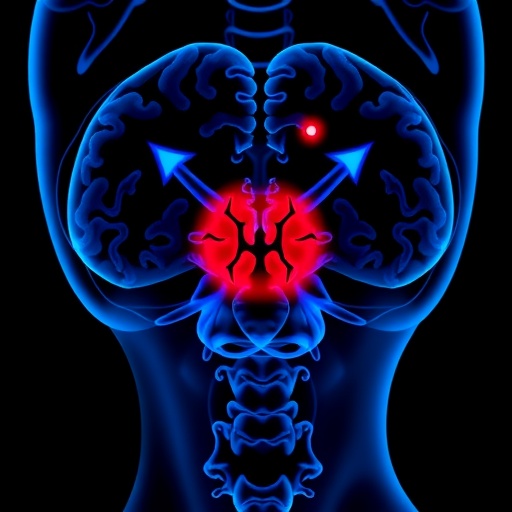Mass. General team’s findings may have application to treatment of cancer, neurodegenerative disorders
Massachusetts General Hospital (MGH) investigators have discovered the mechanism by which cells sense dysfunction of the proteasome – a cellular component that degrades unneeded or defective proteins – and respond in a previously undescribed manner, by editing the amino acid sequence of a key sensing protein. Proteasome dysfunction can lead to the type of buildup of aberrant proteins that characterizes neurodegenerative disorders such as Alzheimer’s disease and is also seen in normal aging. The report is being published in the journal Cell.
The proteasome is comprised of around 20 proteins that form a structure in which unneeded cellular proteins are disposed of in a highly regulated manner. Healthy cells respond to protease dysfunction by increasing production of its component proteins. Two years ago investigators Gary Ruvkun, PhD senior author of the Cell paper, and lead author Nicolas Lehrbach, PhD – both of the MGH Department of Molecular Biology – identified a cascade of sensing and signaling proteins, including the transcription factor SKN-1A, that allows cells in the C. elegans roundworm to detect and respond to proteasome dysfunction.
The Cell paper, co-authored by Peter Breen of Ruvkun’s lab, describes how SKN-1A and its mammalian counterpart Nrf1 are modified by the addition of a sugar molecule called a glycan, a modification that is common on proteins secreted from cells but rare on DNA-binding regulatory proteins. Under normal circumstances, SKN-1A/Nrf1 is efficiently degraded by the proteasome, making that protein a natural monitor of proteasomal function. If proteasomal capacity is exceeded, for example by an excess aggregation of proteins, SKN-1A/Nrf1 is not completely degraded and binds to the DNA adjacent to proteasomal genes, inducing the production of additional proteasomes until the protein is again sufficiently degraded.
In their 2016 paper, Lehrbach and Ruvkun proved that activation of SKN-1A/Nrf1 requires enzymatic clipping of the protein as well as the addition and subsequent removal of glycan molecules. But the functional significance of those events was not clear. In the current paper, they show that the protein removing glycans from SKN-1A – PNG-1 – not only removes those sugars but also edits the sequence of amino acids in SKN-1A, converting four asparagine residues into aspartates. If the asparagines are converted into a different amino acid, SKN-1A is dysfunctional. Genetically introducing the aspartate molecules activates SKN-1A without the need for PNG-1, indicating that the protein sequence editing, not the deglycosylation, is key to SKN-1A function. This newly discovered mechanism by which proteasome function is controlled through amino acid sequence editing represents an unprecedented post-translational modification of an endogenous protein.
The investigators also found that engineered overactivation of SKN-1A, genetically altering the four deglycosylated asparagines into aspartates, leads to striking effects on proteasome maintenance and stress resistance. Hyperactive SKN-1A confers extreme resistance to proteasome inhibitors and effectively “cures” a C. elegans model of Alzheimer’s disease.
The authors note that this discovery has important applications for cancer, aging, neurodegenerative diseases and a rare human disease involving mutations in a protein called NGLY1, the human version of roundworm PNG-1, which affects the function of many nerve cells. The current study’s findings in C. elegans suggest that the human disorder also involves a failure to edit sugar-modified asparagines in Nrf1 into aspartates, disabling the ability of the proteasome to respond to protein aggregation. Interventions that pre-edit those asparagine molecules might reactivate proteasome genes in affected patients.
“We do not yet understand why sequence editing of SKN-1A/Nrf1 is essential for it to regulate proteasome genes,” says Lehrbach. “A deeper mechanistic understanding may aid development of treatments for NGLY1 deficiency and other neurodegenerative diseases. It will also be interesting to search for additional proteins that are regulated by deglycosylation-dependent sequence editing.”
A second paper by Lehrbach and Ruvkun, published on April 11 in the journal eLife, explores how protein aggregation triggers activation of SKN-1A and how that activation allows cells to respond. Accumulation of damaged and misfolded proteins is a hallmark of Alzheimer’s disease and other adult-onset neurodegenerative disorders, and in this paper the researchers showed that expression of human amyloid beta in a C. elegans Alzheimer’s model triggers SKN-1A-induced activation of proteasome gene expression. Activated SKN-1A then confers resistance to the age-dependent effects of amyloid beta aggregation, slowing the accumulation of the Alzheimer’s-associated peptide and delaying cellular dysfunction.
“These findings show that SKN-1A surveys protein folding and adjusts proteasome capacity to meet protein quality control needs,” Lehrbach explains. “While C. elegans mutants lacking SKN-1A show enhanced age-dependent toxicity of misfolded proteins, reducing their lifespan, increasing SKN-1A levels is sufficient to extend the animals’ survival. The ability of this pathway to mitigate the effects of age-associated protein misfolding and aggregation supports the possibility that drugs or interventions that increase Nrf1 activity in humans may be beneficial in aging and treatment of age-associated neurodegeneration.”
###
Both studies were supported by National Institutes of Health grant R01 AG016636 and the Grace Science Foundation, which supports research into NGLY1 deficiency, The Cell study was also funded by the Human Frontier Science Foundation.
Massachusetts General Hospital, founded in 1811, is the original and largest teaching hospital of Harvard Medical School. The MGH Research Institute conducts the largest hospital-based research program in the nation, with an annual research budget of more than $925 million and major research centers in HIV/AIDS, cardiovascular research, cancer, computational and integrative biology, cutaneous biology, genomic medicine, medical imaging, neurodegenerative disorders, regenerative medicine, reproductive biology, systems biology, photomedicine and transplantation biology. The MGH topped the 2015 Nature Index list of health care organizations publishing in leading scientific journals and earned the prestigious 2015 Foster G. McGaw Prize for Excellence in Community Service. In August 2018 the MGH was once again named to the Honor Roll in the U.S. News & World Report list of “America’s Best Hospitals.”
Media Contact
Terri Ogan Janos
[email protected]
http://dx.




